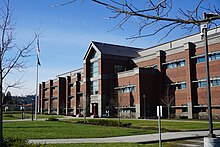Impact of Federal Funding Freeze on School Districts
The recent decision to withhold $7 billion in federal funds has created significant challenges for school districts across the United States. This funding is essential for supporting various programs that serve students, particularly those from lower-income backgrounds. The Vermont Agency of Education reported that districts received $26 million from this total, while state leaders in New York mentioned that over $460 million was used last year.
Support kami, ada hadiah spesial untuk anda.
Klik di sini: https://indonesiacrowd.com/support-bonus/
These funds are allocated through six different federal grant titles, which help schools operate summer day programs, after-school programs, teacher development initiatives, and English education for migrant students. With the freeze in place, many districts are forced to make difficult cuts and seek alternative funding sources that they typically wouldn’t consider.
Marie Gilmond, the executive director of Tapestry & Epic, a summer and after-school program in the Rutland City Public School district, emphasized the importance of this funding. She stated, “It is significant money when you’re talking about running programs for kids in our community.” Currently, around 200 students are involved in the K-12 programs offered by Tapestry & Epic.
Gilmond noted that the state has stepped in to cover 57% of the cost to run the program, allowing it to continue this summer. However, she expressed concerns about the future, stating, “As we move closer to the school year and hopefully learn more, we will have to make adjustments, especially if the funding is reduced or removed.”
Support us — there's a special gift for you.
Click here: https://indonesiacrowd.com/support-bonus/
Assistant Superintendent Bianca McKeen highlighted the critical role of federal funds in meeting the needs of students, particularly in public schools. She said, “Public Schools especially really rely on federal funds to help us be able to meet the needs of our students in the best way that we can.”
Vermont’s Secretary of Education Zoie Saunders mentioned that her team has been working closely with districts across the state to provide support. She explained, “We’re already seeing that they’re having to make really tough decisions around cuts now.”
New York Senator Kirsten Gillibrand (D NY-20) criticized the Trump administration’s actions, calling them “absurd” and “illegal.” She pointed out that the funds were approved by Congress in the fiscal year 2024 appropriations budget, which passed with bipartisan support. Gillibrand added, “These funds were approved by Congress in the fiscal year 2024 appropriations budget, which passed with bipartisan support.”
School districts across the country are currently exploring options to work within their already-passed budgets. However, there is no clear timeline for when they might see their grant money returned. This uncertainty is causing additional stress for administrators and educators who are trying to plan for the upcoming school year.
The impact of this funding freeze extends beyond just financial constraints. It affects the ability of schools to provide essential services to students, particularly those who depend on these programs for academic and social development. As districts navigate these challenges, the need for stable and predictable federal funding becomes even more apparent.
With ongoing discussions about the future of these grants, the focus remains on finding solutions that ensure all students have access to the resources they need to succeed. The situation underscores the importance of collaboration between federal and state officials, as well as local school districts, to address the immediate and long-term needs of students across the nation.







